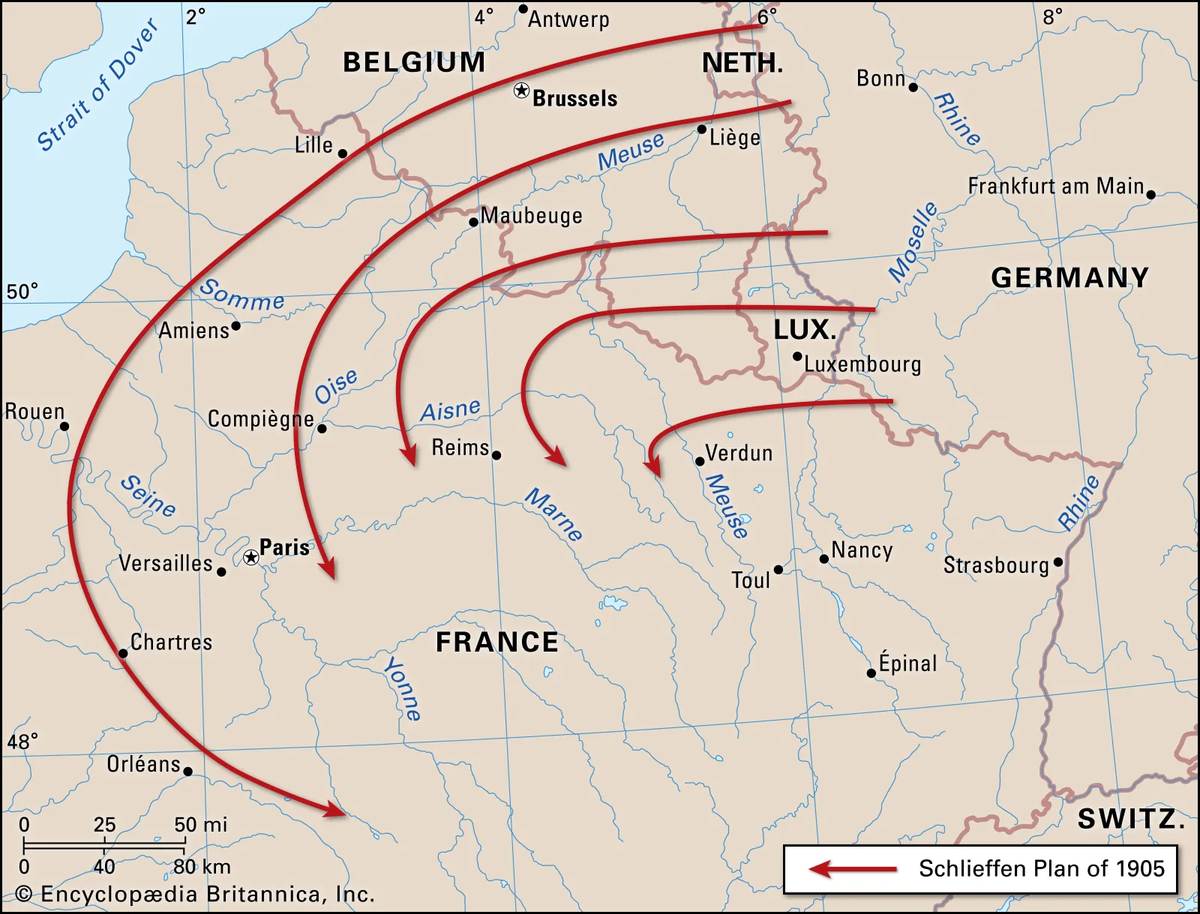The Schlieffen Plan

In 1905, Germany believed that war with Russia was likely. They knew that if they entered a war with Russia, France would side with the Russians because they were allies.
To address this, they asked Alfred von Schlieffen, the German Army's chief of staff, to produce a plan to avoid having to fight on two fronts. The Schlieffen Plan relied on four assumptions:
- Russia would not mobilize for six weeks after war was declared
- Germany would be able to defeat France before the six weeks were over
- Belgium would not respond to Germany's army passing through it
- Britain would remain neutral
The first step in the Schlieffen Plan was for Germany to invade France. They would do this by marching through Holland, Belgium, and Luxembourg with 90% of their forces and leaving the other 10% to guard the Eastern front. The German armies would invade Paris and knock France out of the war. Then, they would move to the Eastern front and attack Russia.
After Helmuth von Moltke the Younger replaced von Schlieffen in 1906, he made a few changes to the plan. First, the German armies would attack through just Belgium, and only 60% of the forces would be used against France.
Germany used this plan in WWI, but they were defeated because none of the four assumptions were valid. Russia was prepared to mobilize BEFORE the war even started, and Germany was unable to defeat France before the Russians mobilized. Belgium did not let Germany's armies through, they even attacked them, and Britain helped the Belgians and the French repel the Germans.




